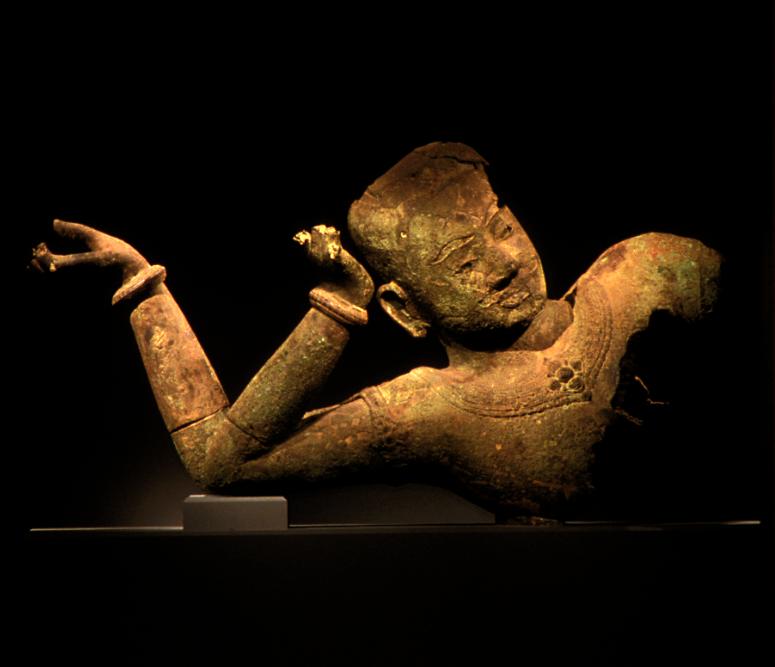1975

This bronzed image of the Hindu god Vishnu, created in the 11th century, was included in the National Gallery of Art’s 1997 indemnified exhibition Sculpture of Angkor and Ancient Cambodia: Millennium of Glory. Photo courtesy of National Gallery of Art
Priceless canvases painted by Picasso, fragile terra cotta warriors from ancient China, a gilded baroque silver tea service used by nobility in one of Russia’s most opulent palaces. These and other irreplaceable objects have been carefully packed in crates and shipped around the globe so that the American people can enjoy them and marvel at the cultures that created such astonishing works. Given the tremendous value of these objects, their owners require insurance prior to shipping. That’s where the government steps in.
The Arts and Artifacts Indemnity Program was created by Congress in 1975 for the purpose of minimizing the costs of insuring international exhibitions. The program, administered by the National Endowment for the Arts on behalf of the Federal Council on the Arts and the Humanities, has indemnified more than 1,200 exhibitions, saving the organizers more than $417 million in insurance premiums. The program has a substantial impact on the country's museums, large and small. "We would not have been able to mount the number of foreign shows we do without the indemnity program. It would really limit our options because the insurance costs would just be prohibitive," said Earl A. Powell III, former director of the National Gallery of Art (NGA) in Washington, DC. "Because of this program, members of the public get to experience tremendous works of art that they wouldn’t normally be able to see unless they could travel to the countries of origin. That’s out of reach for most Americans."
Many of the indemnified exhibitions provide the only public access to rare items. For example, in the case of the NGA’s exhibition Sculpture of Angkor and Ancient Cambodia: Millennium of Glory, virtually all of the objects came from sites that were inaccessible for many years due to unrest and war. Besides making rare works of art more accessible, the program has also encouraged museums to take better care of their precious possessions. "Because of its strict guidelines," said Powell, "the packing and shipping standards have been upgraded and now even serve as a model to the European institutions."
Due to the overwhelming success of the program, in 2007 the act was amended to include domestic exhibitions, providing coverage for works of art owned by U.S. entities while on exhibition in the United States.

